Georgia WWSCAN Biweekly Update 9/1/2023
Welcome to the bi-weekly update for WWSCAN partners in Georgia! The samples provided up through 8/25/23 have been processed in the lab and data are on the site at data.wastewaterscan.org.

If you notice any bugs on the site or have any comments about it, please continue to send your feedback via email Amanda Bidwell at albidwel@stanford.edu. We thank you for your partnership!
Infectious Disease Target Review
Currently monitoring SARS-CoV-2, IAV, IBV, RSV, HMPV, Norovirus GII, & Mpox
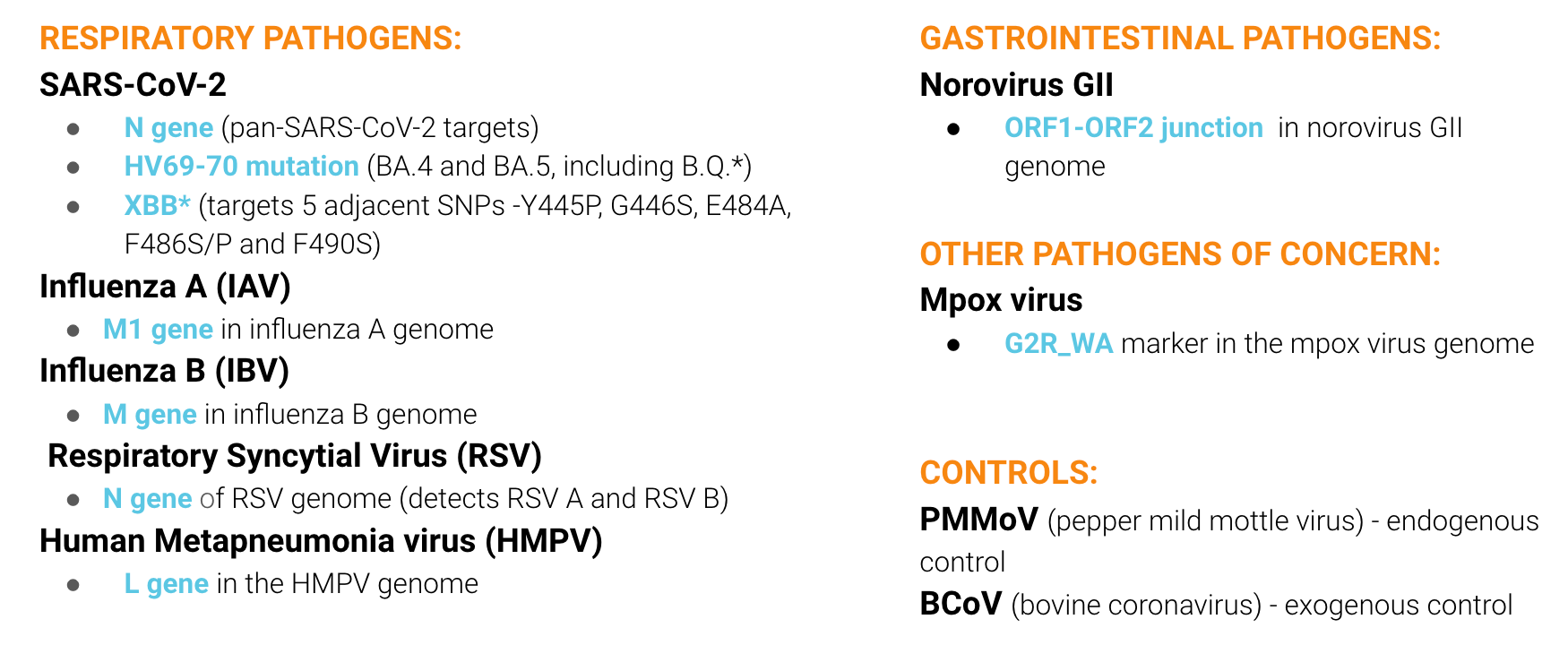
The methods for our assays are in the public domain. You can access them using these QR codes:

New Pathogen Announcement
We will soon be adding Enterovirus D 68, Human Adenovirus Group F, Rotavirus, Candia auris, and Hepatitis A to WWSCAN
During the August 2023 stakeholder meeting we announced we would be rolling out 5 new pathogen targets to all WWSCAN sites including our 8 Georgia sites. The 5 new pathogens have undergone a rigorous validation process and are now ready to be deployed (see our process in the graphic below). You can read about the methods we are using to measure the new targets in these two preprints: first preprint, second preprint.
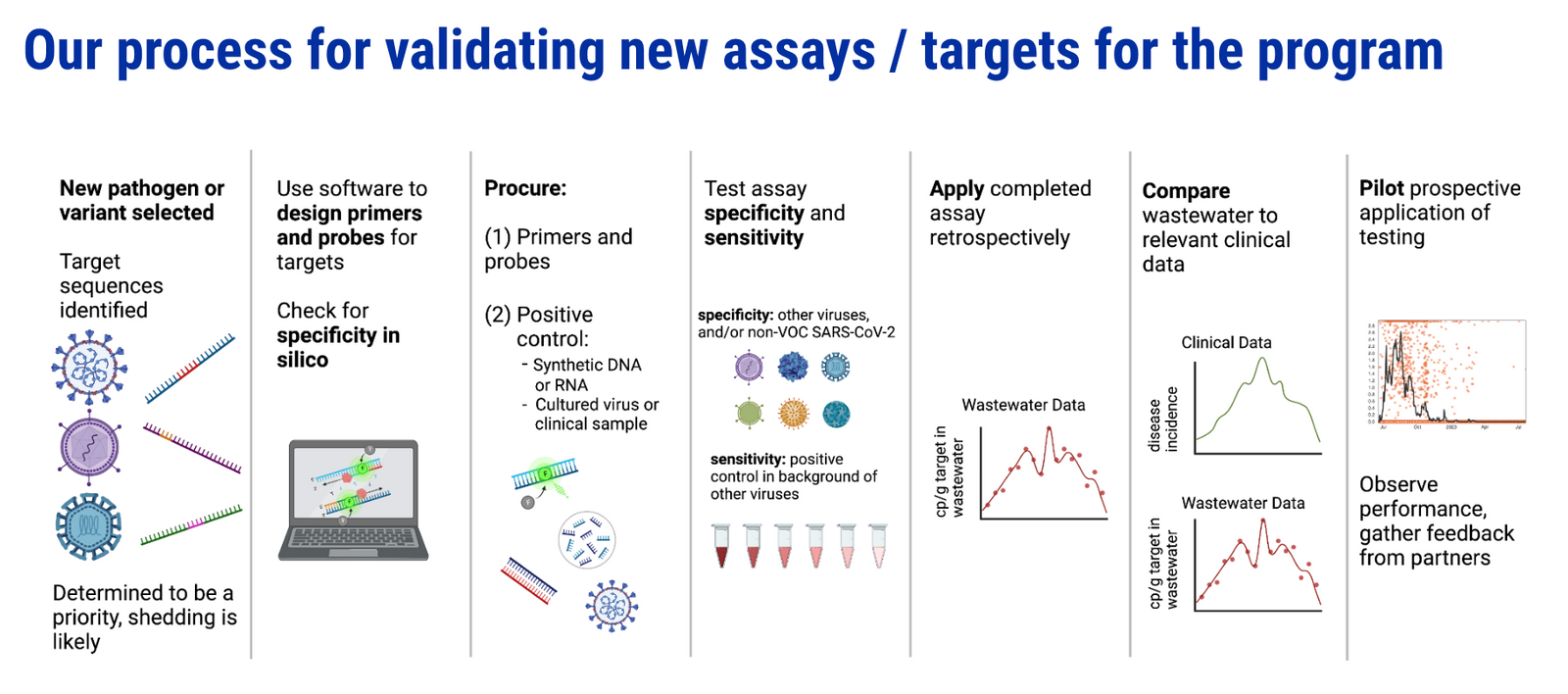
We plan to start prospectively measuring concentrations of the new targets next week; data will be available through a staged dashboard for about 2 weeks before the staged site will be launched for public consumption. We will email you with the exact date we will start early next week.

Wastewater Categories
Updates to the website will categorize sites based on Level, Trend, and Detection Frequency
At last week's special stakeholder call we reviewed analysis being conducted to develop a clear way to communicate what wastewater is telling us about community disease circulation.
The new Wastewater Categories will use the following tools for interpretation:
- Levels tell us whether wastewater concentrations are relatively lower or higher
- Trends tell us how wastewater concentrations are changing
- Frequency of detection is important for rare targets
We will also use information about the start and end of wastewater events for seasonal pathogens using methodology described here. If you missed last week's call, here is the recording of the presentation. We plan to share more with you next Friday during our regularly scheduled monthly meeting.
COVID-19
SARS-CoV-2 and Variants
SARS-CoV-2 N gene RNA concentrations have increased to range between 55,000 and 300,000 copies per gram.
The dark gray line in each chart is a population-weighted aggregated trend line for all 8 Georgia sites when the data is normalized by PMMoV. "National levels" visually benchmark where concentrations fall compared to previously recorded measurements for each pathogen. The aggregated line in the chart below shows that SARS-CoV-2 N gene RNA concentrations continue to be within the upper third level of all concentrations measured in the last year. Additional information on the methodology behind this trend line is available here in the "How are aggregated trendlines determined?" section. More details can be found under the "How are national levels determined?" section here.
For most targets, we are also including a trend analysis of their concentrations in wastewater solids (normalized by PMMoV) based on the most recent estimates compared to the recent past. In order to calculate a trend, we require 3 points over the last 21 days. We test for linear trends between log10-transformed concentration (target/PMMoV) and time; the trend must be classified as statistically significant (p<0.1). To read more about our methods for trend analysis click the link here. Analysis of SARS-CoV-2 concentrations shows there is no trend across the Georgia sites except for a significant downward trend at College Park and a significant upward trend at the Columbus site.

Early in 2023, WWSCAN started testing for XBB* and these results are available to view by selecting 'SARS-CoV-2 View by Variant' on data.wastewaterscan.org. For Georgia sites, data dates back to early February 2023 and can be seen in the chart below. The ratio of the XBB* mutations/N across all Georgia plants is shown in the left chart below. As the ratio reaches 100%, it suggests that all the SARS-CoV-2 genomes in wastewater have the XBB* mutations. These estimates have not changed much since our last update, and data indicate that the average ratio XBB* mutations/N is ~75% but has ranged from 40-100% recently. This suggests the majority of infections across the communities are caused by XBB*. The right chart below shows the ratio of the BA.5, BA.4, and BQ* mutation/N across all Georgia plants. Use this link to view the chart on the site. It can be read the same way as the XBB* chart. The average ratio is close to 0%. Note that our XBB* assay will also detect XBB.1.16, XBB.1.9, FD.2 (XBB.1.5.15.2*), and EG.5. Ho,wever the XBB* targets are NOT present in BA.2.86.
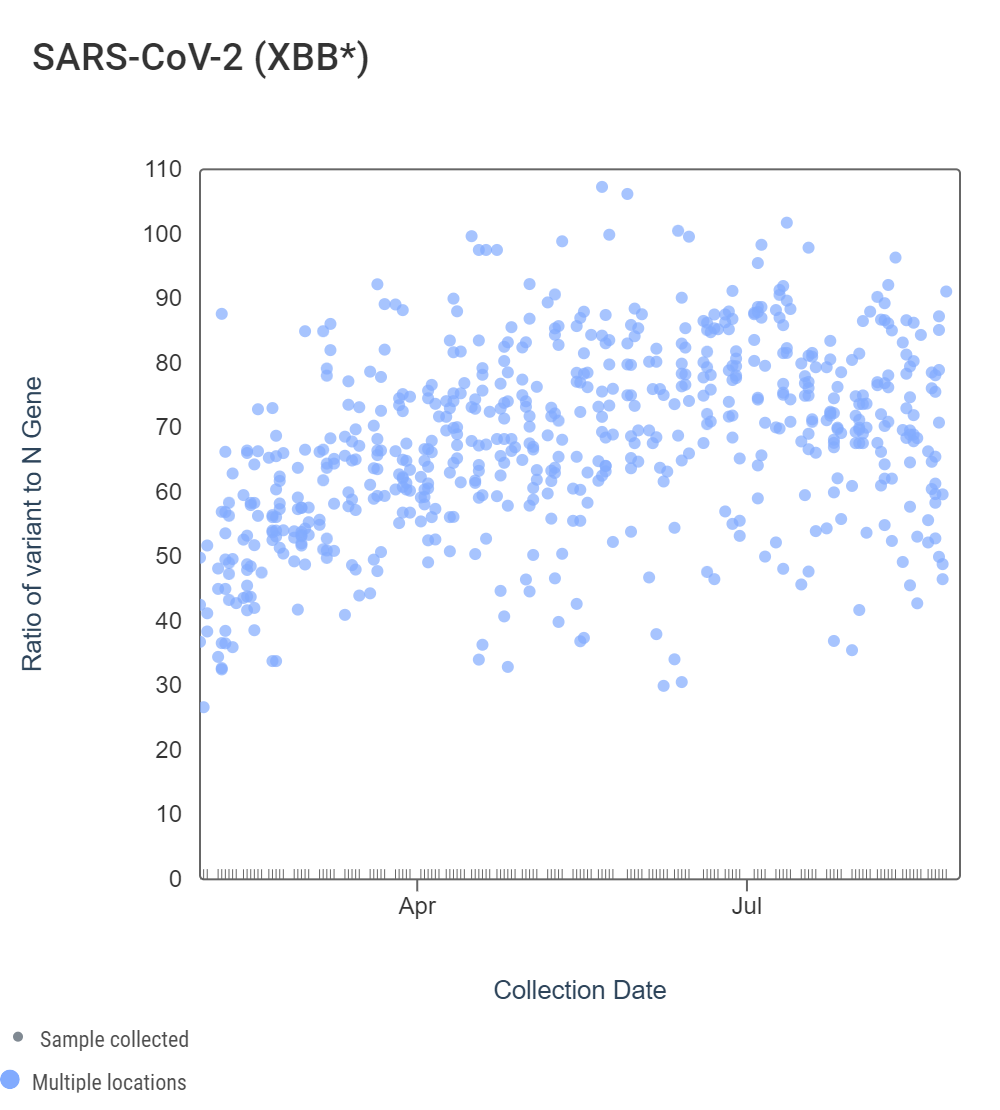

Other Respiratory Targets
Influenza A & B, Respiratory Syncytial Virus, and Human metapneumovirus
RSV RNA has been sporadically detected at lower concentrations at most of the Georgia sites. Concentrations are less than 7200 copies/g. An analysis of IAV RNA concentrations showed there is no trend at 5 Georgia sites and a significant upward trend at the Big Creek, College Park, and Johns Creek sites.

Below are the RSV RNA concentrations (normalized by PMMoV) from sites in the Southern US (AL, AR, DE, FL, GA, KY, MD, NC, TN, TX, VA, and WV). The population weighted average across regional WWSCAN plants is shown in black and raw data are shown as purple dots. It is evident that concentrations in the South are relatively high around the start of the year with very low levels and mostly non-detects presently observed.
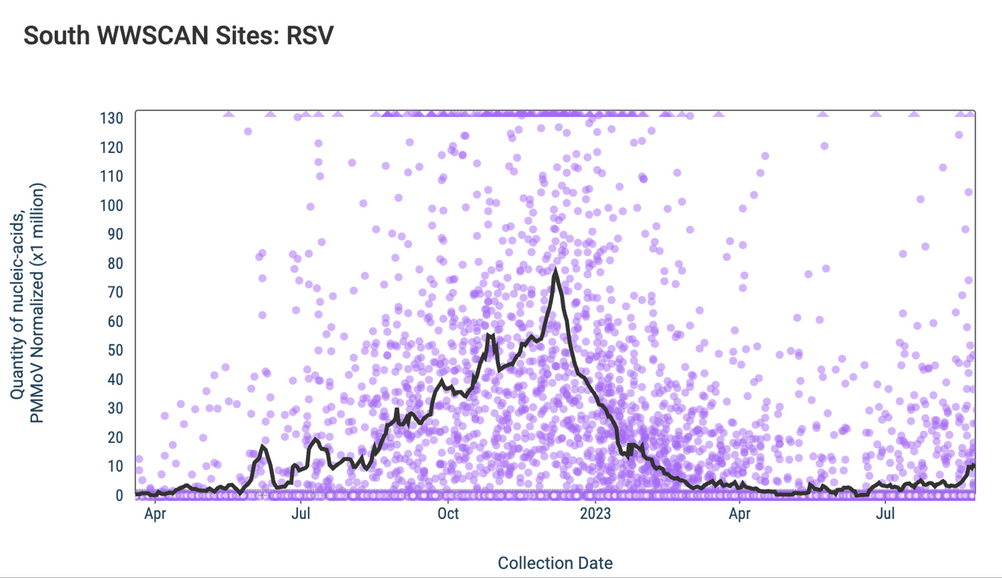
Influenza A (IAV) RNA was not detected at any of the Georgia sites in the last two weeks, according to the heat map below. An analysis of IAV RNA concentrations showed there is no trend across Georgia sites.
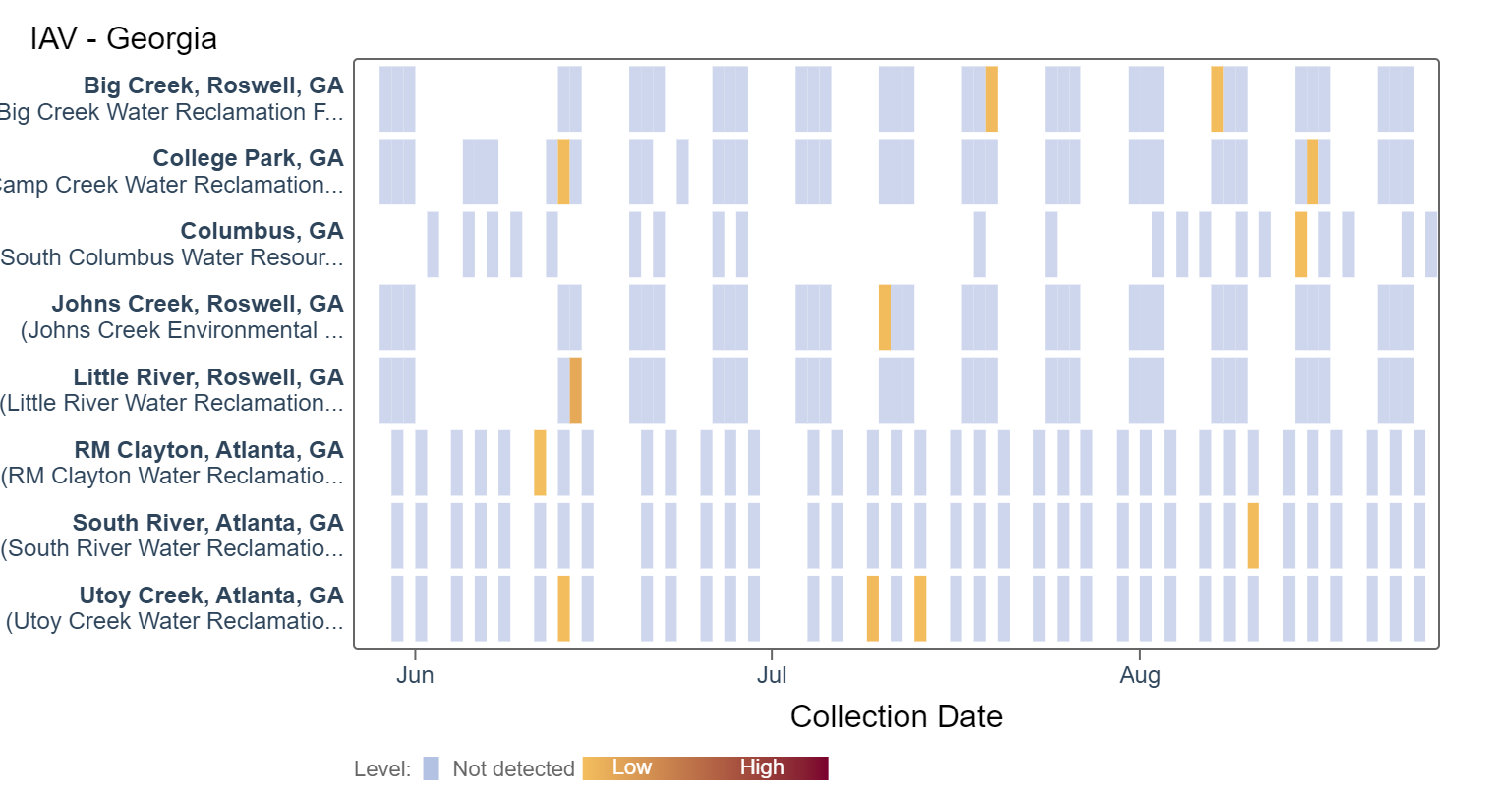
Influenza B (IBV) RNA was also not detected at any of the Georgia sites in the last two weeks.
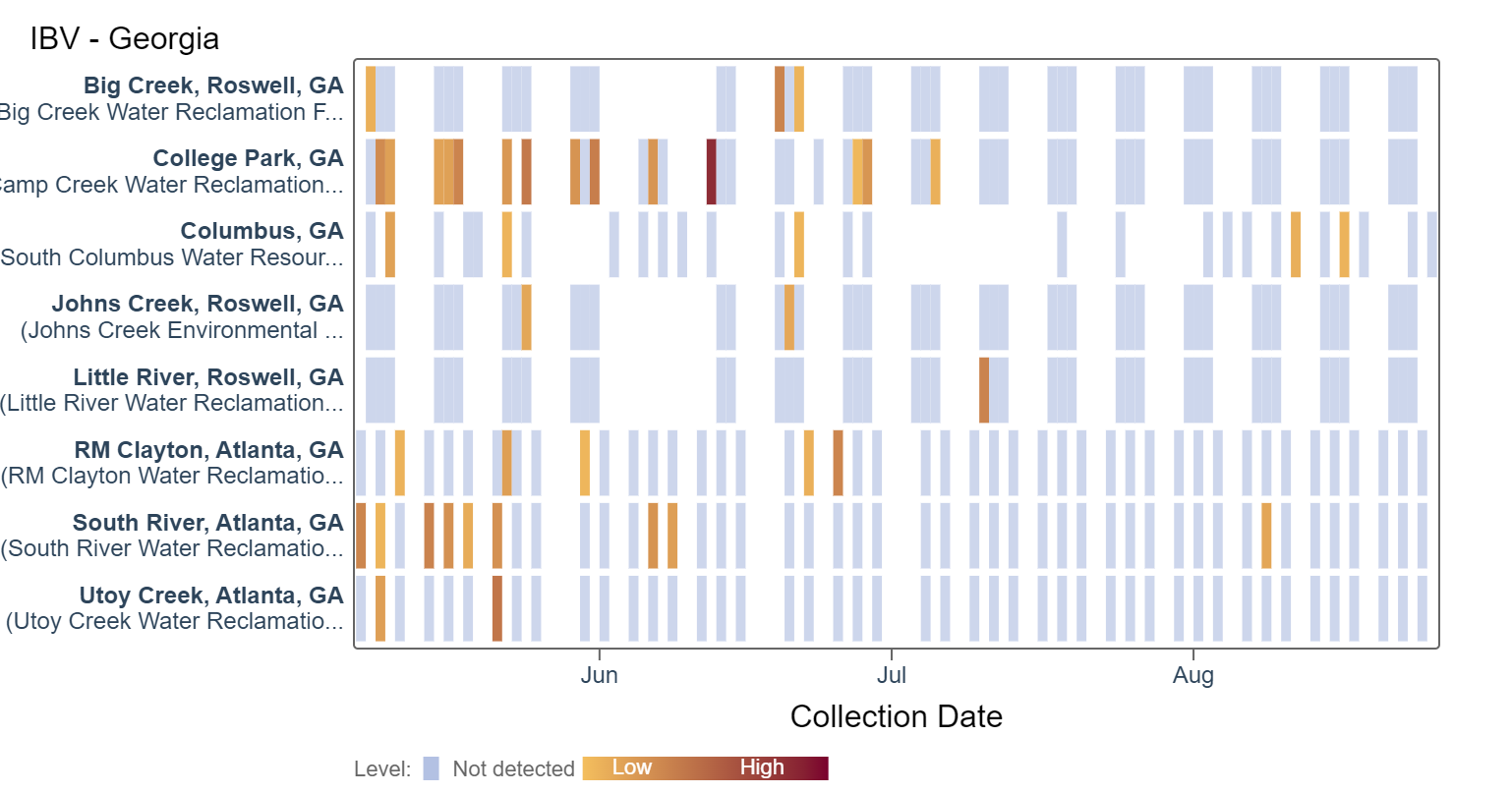
HMPV (human metapneumovirus) RNA has not been detected at some sites in over a month and RSV was not detected within the last two weeks at any Georgia Sites. An analysis of HMPV concentrations showed there is no trend across Georgia sites with the exception of a significant upward trend seen at Big Creek, Johns Creek, and Little River.
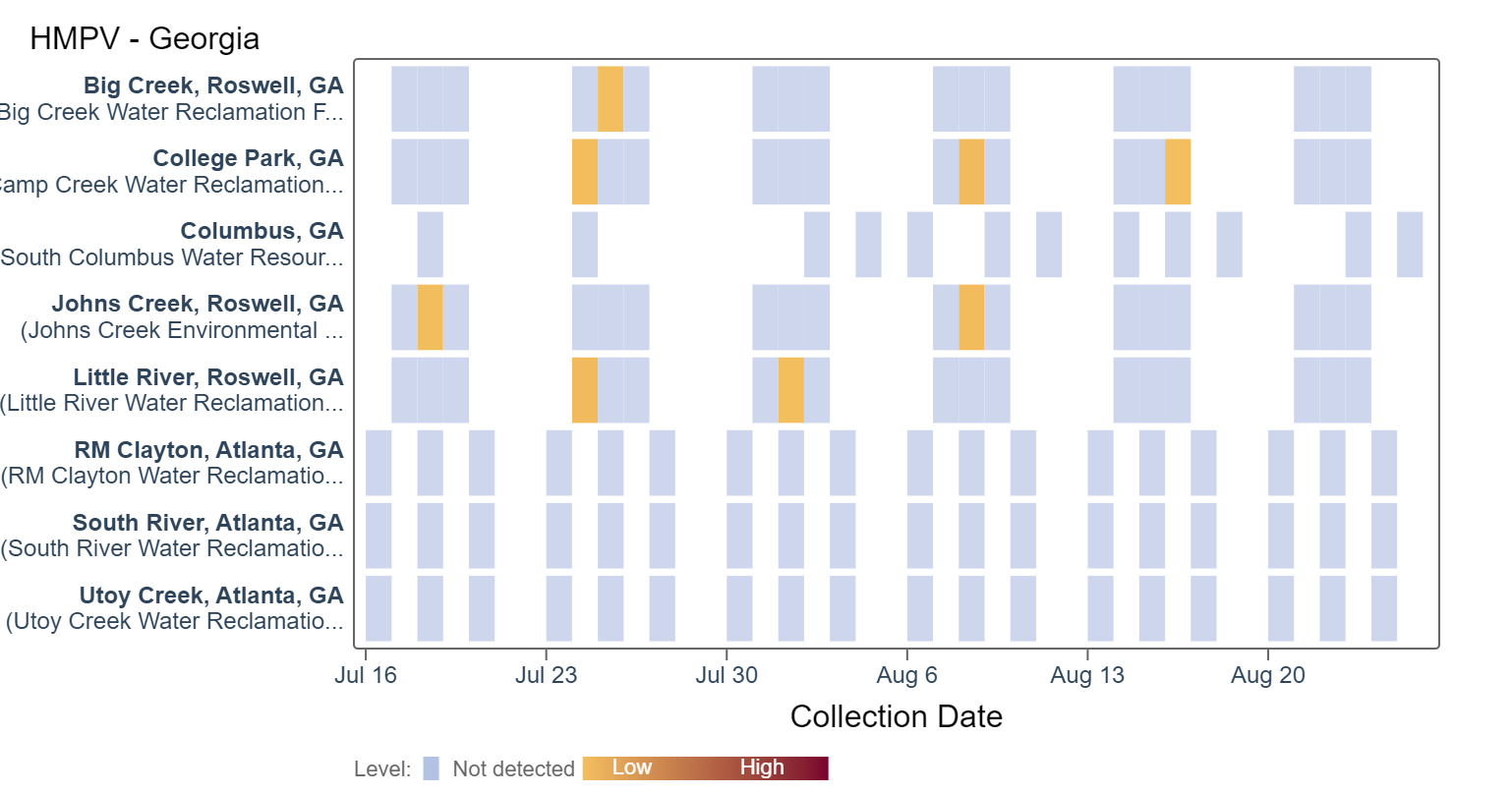
Gastrointestinal Targets
Norovirus GII
Norovirus GII (HuNoV GII) RNA concentrations are between 1,100,000 and 5,500,000 copies/g and are in the bottom third level for all 8 sites. According to the chart below, the aggregated line shows that HuNoV GII RNA concentrations have been within the bottom third level of all concentrations measured in the last year. Trend analysis of HuNoV GII concentrations showed there is no trend across Georgia sites, with the exception of a significant upward trend at the Columbus and South River sites.
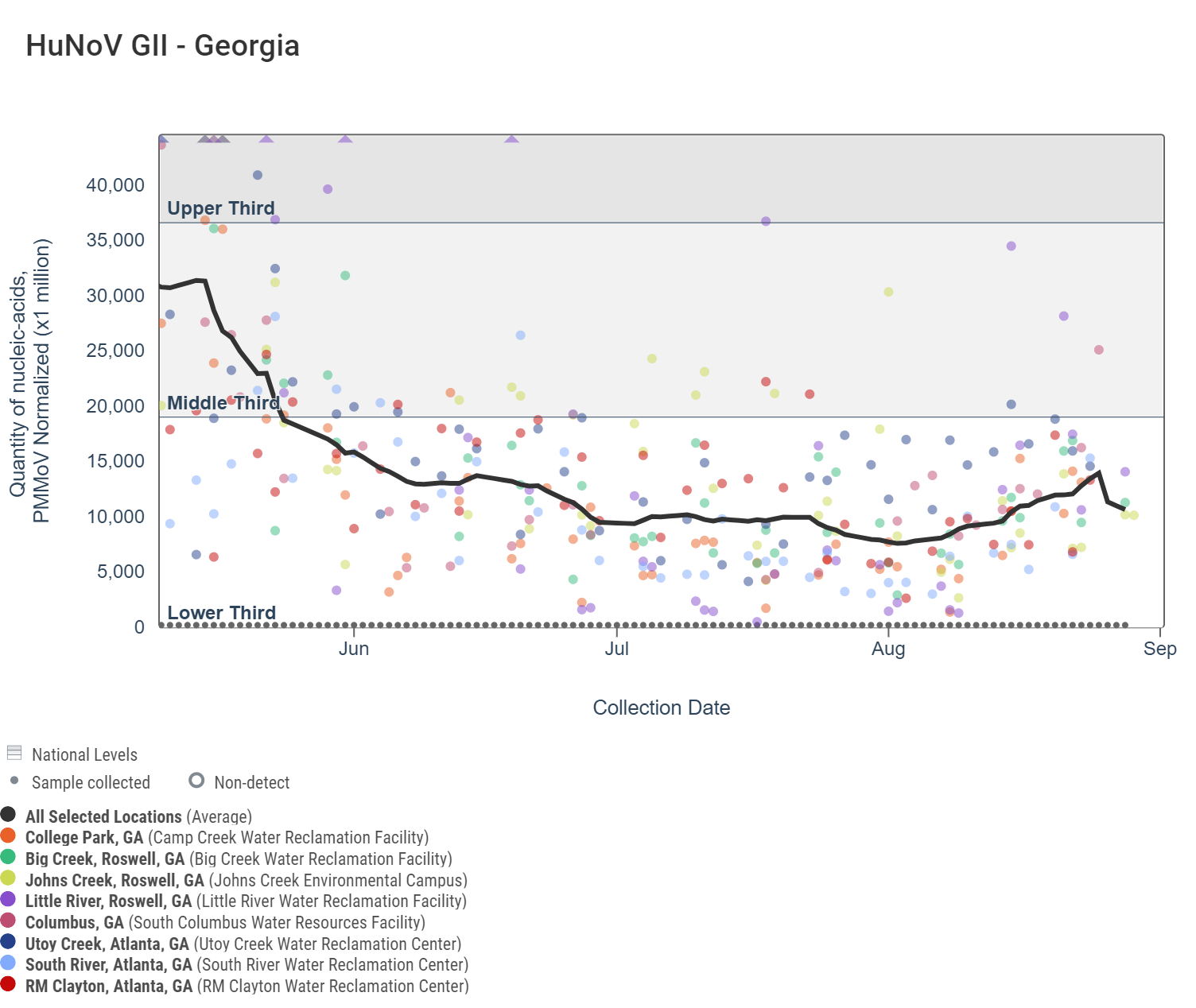
Mpox
Results are non-detect for mpox for the past 21 days at Georgia plants. This heat map shows data since July 2022. Sites are labeled in the rows and each date a sample was collected as a column. The color blue means the sample was non-detect for mpox DNA and the colors get darker with higher concentrations.

Related News
The next stakeholder meeting will take place Friday, September 8th @ 12 PM EST.
